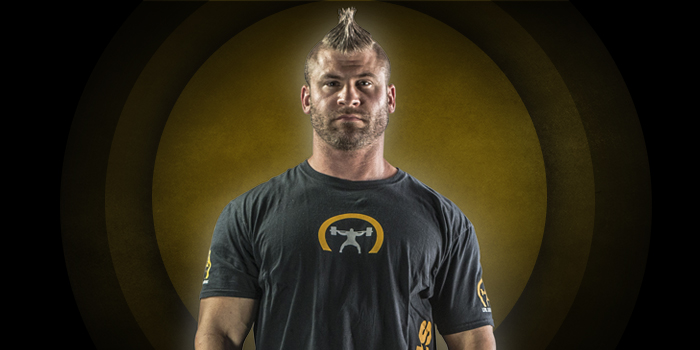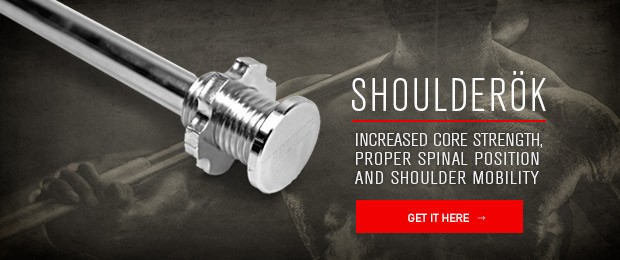
I don't claim to know everything when it comes to the squat, but I have been around some great advice over the years. Whether it be Dave Tate beating training knowledge into me or Chris Duffin speaking about proper bracing, stacking, and moving, I always try to have an open ear. It is also a blessing to be part of a team that has world record holders in the squat—as well as several other lifts—that I get to watch and learn from. The suggestions I am about to give are not my own but are delivered in a different way so that maybe the majority will understand. They are methods that have resonated with my online and in-person clients.
WATCH: Using the Box Squat to Correct Posterior Chain Weaknesses
I am a technique guy; I cannot just walk up to a weight and get the lift by brute strength alone. Everything has to be firing in order for me to make a lift. Explosiveness is a quality of strength I possess, but I am also not a “grinder.” What this means is that I will not strain under load for long periods of time (over two seconds is long to me). I will cut my losses because the risk is greater than the reward during attempts that are grinders for me. Regardless of the type of lifter you are—explosive or grinder—there are two things many people suck at that are ultimately hurting their squat.
Bracing
Most lifters understand what bracing is by now, especially those who are on this site and coming across this article. But even of those who know, they aren't using bracing to its full potential. From the experiences I have coaching, I find people focus too much on filling their belt out only in the front. There are several reasons for this and one of those reasons may be the use of bad cues. Off the top of my head, these include:
- “Big belly.”
- “Breathe through your belly.”
- “Push your belly out.”
- “Diaphragmatic breath.”
All of these can be valid cues if they turn the light bulb on for the individual lifter, but most of the time they are not very helpful unless explained in depth. Something that I have a lot of lifters work to feel—unknown to them prior to working on breathing drills—is breathing laterally. Yes, sideways. When a lifter breathes with their diaphragm, it means they push their belly forward, which is fine, but lifters also need to make a trunk very wide and rigid like a tree. So the belly traveling forward is only one-third of our trunk; we need it to expand sideways and backward a little bit too.
What I have found is that when we can have lifters or clients focus on breathing out into the sides of their trunk, it also gives them the ability to expand the lower part of their back as well. Clamping your hands together on someone’s sides and pressing into them, requesting they breathe out against your hands, is a start to offer proprioception on how, where, and what direction you want them to breathe. Once they have the ability to breathe laterally, it should be mentioned that when using a belt there should be no difference in approach to breathing and bracing. Suggest focusing on the sides of the belt and feeling the pressure there rather than in their “belly.”
Hip Hinge
The greater issue that many people have no clue about is how to utilize a proper hip hinge during the squat. Back in 2013, Coach Zweifel wrote an article for elitefts on how to properly hinge. Still, to this day, I see it getting screwed up daily by tons of people — elite level athletes included!
So what is it that causes the hip hinge to be so difficult? In my opinion, it is proprioception of a neutral loaded spine. The majority of lifters, both competitive and casual, go into back extension, allowing their hips to anteriorly tilt. But to them, it “feels” like they are pushing their hips back. Just to explain the severity of this, when you initiate a squat with back extension, you instantly move through the lumbar spine. The majority of people who accomplish this will not hit competition depth without going back through spinal flexion, allowing the hips to posteriorly tilt (also known as “butt wink”). This is just during the eccentric (lowering) phase. We then have to go back through both ranges of motion on the way up, so we just had a lifter go through spinal flexion once and extension twice, all while under load. This is how you say goodbye to spinal discs.
Over the course of this past year, there are a few helpful things I have picked up to aid others in correcting these minor mistakes that lead to major problems. As stated before, I have learned all of this information from coaches much greater than I. The ShouldeRök hip hinge squat is a game changer. It allows the proprioception of a straight bar on your back and it lets you know when you screw up and go into flexion at every point during your squat. Not only does it correct back extension, but it also teaches us to have a neutral spine. The cue “chest up” is terrible in my opinion, because it makes the lifter go into greater spinal extension. Our chest actually needs to be pinned down to keep a neutral spine and contracted erectors. This means that we will have a forward leaning angle with our chest, but that does not mean our chest or eyes are parallel with the floor. It just means that your upper and lower back are straight!










